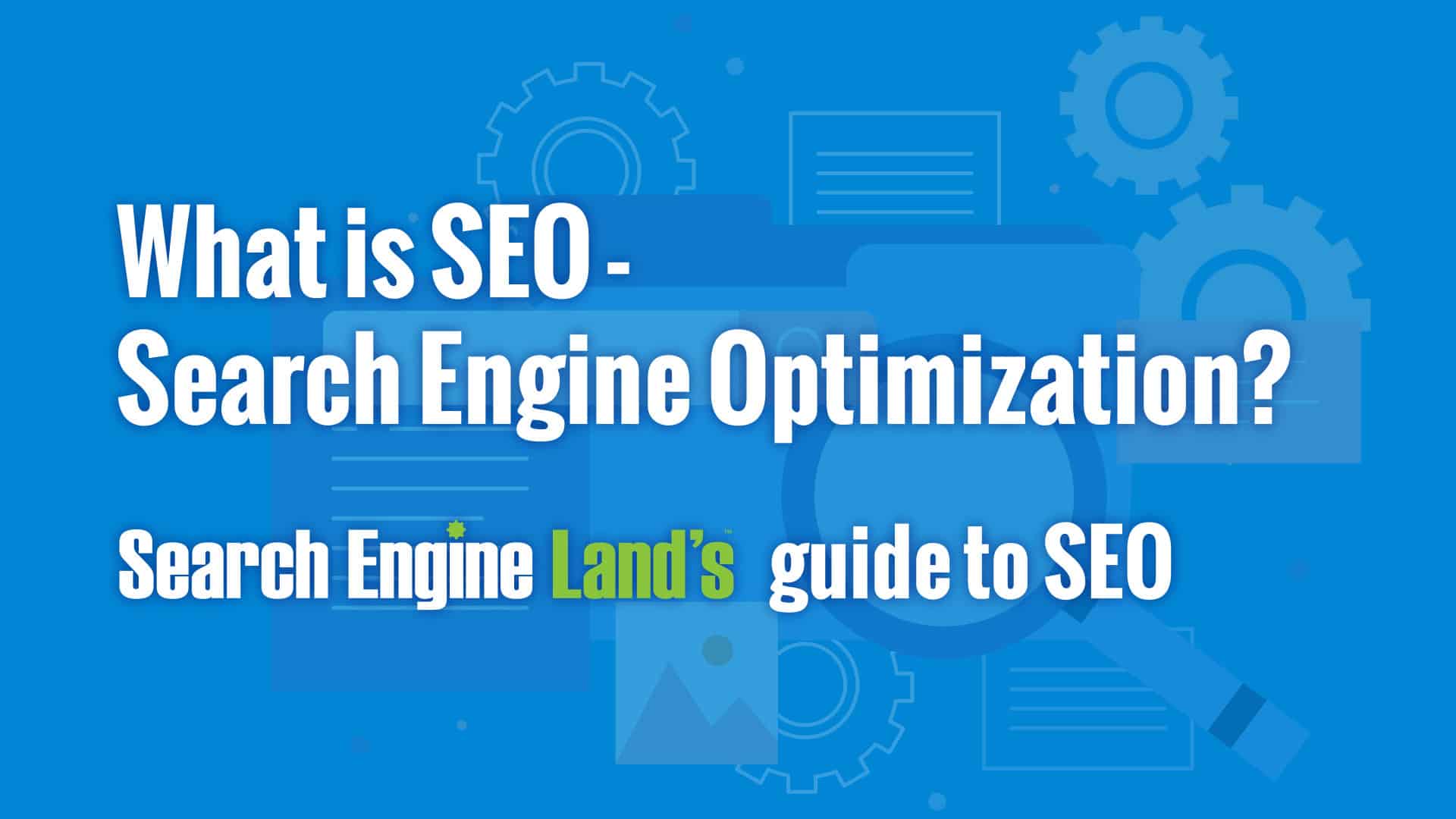
Introduction to SEO
What is SEO?
Search Engine Optimization (SEO) enhances a website’s visibility on search engines like Google. By optimizing various elements within a website, businesses aim to rank higher in search results, making it easier for potential customers to find their products or services. SEO involves strategies, such as keyword research, content creation, and technical adjustments. For instance, when someone searches for “best coffee shops near me,” effective SEO strategies ensure that a local café appears at the top of the search results. This demonstrates the crucial role SEO plays in driving valuable organic traffic to websites.
Importance of SEO for Websites
SEO is indispensable for any website looking to succeed online. Here are some key reasons why:
- Increased Visibility: Higher rankings lead to more clicks, establishing your brand in the market.
- Cost-Effectiveness: SEO is a cost-efficient way to gain traffic compared to paid advertising.
- Credibility and Trust: Websites on the first page of search results are perceived as more trustworthy.
By prioritizing SEO, businesses boost their online presence and build more meaningful connections with their audience.
Keyword Research
Understanding Keywords
Keyword research is a fundamental aspect of SEO that identifies potential customers' terms and phrases when searching online. Understanding keywords is like having a map that guides you through the vast internet landscape. By knowing which keywords resonate with your audience, you can tailor your content to meet their needs. For example, if you're a local bakery, phrases like "freshly baked bread" or "custom birthday cakes [city name]" could be crucial for attracting local customers. Keywords can be categorized into:
- Short-Tail Keywords: General terms, e.g., "cakes"
- Long-Tail Keywords: More specific phrases, e.g., "vegan chocolate cake recipes"
Tools for Keyword Research
Several tools make keyword research more manageable and effective. Here are a few worth exploring:
- Google Keyword Planner: Ideal for finding keyword ideas and search volume.
- SEMrush: Offers insights into competitor keywords, helping you identify gaps in your strategy.
- Ubersuggest: A user-friendly tool for keyword suggestions and SEO analysis.
These tools can save time and sharpen your SEO strategy, ensuring your website attracts the right audience.

On-Page Optimization
Meta Tags and Descriptions
On-page optimization is a crucial phase of SEO that focuses on enhancing individual web pages to improve rankings. A key component of this is using meta tags and descriptions effectively. Meta tags, including title tags and meta descriptions, provide search engines with essential information about your content. For example, when crafting a meta description for a blog about gardening, you might write: "Discover essential tips for maintaining a lush garden all year round!" This not only informs users about the content but also encourages clicks. Best practices for meta tags include:
- Keeping title tags under 60 characters for visibility
- Writing compelling meta descriptions of about 155 characters to grab attention
Content Optimization Techniques
In addition to meta tags, optimizing the content itself is vital. This includes:
- Using keywords naturally throughout your text
- Incorporating headings and subheadings for better readability
- Adding internal and external links to enhance authority and user experience
These strategies work together to create a user-friendly experience while ensuring that search engines recognize the value of your content. Optimizing on-page elements can make a significant difference in your overall SEO performance.
Off-Page Optimization
Link Building Strategies
While on-page optimization enhances individual websites, off-page optimization focuses on improving site authority through external efforts, prominently via link building. Developing a robust link-building strategy can significantly elevate your SEO game. Here are some effective strategies:
- Guest Blogging: Writing articles for other websites in your niche can introduce your brand to new audiences while earning backlinks.
- Resource Pages and Listings: Connect with websites that compile valuable resources in your industry and request inclusion.
- Social Media Engagement: Sharing your content on social platforms can increase visibility, leading to potential backlinks.
An example is when a cooking website guest posts on a popular food blog. This not only garners a backlink but also showcases the guest contributor’s expertise to a wider audience.
Importance of Backlinks
Backlinks are one of the most important factors in SEO, as they signal to search engines that other websites consider your content valuable. Why do backlinks matter?
- Increase Domain Authority: Quality backlinks improve your site's credibility in the eyes of search engines.
- Referrals and Traffic: Backlinking from highly visited sites can drive significant traffic to your page.
- Improved Rankings: More quality backlinks generally correlate with higher search engine rankings.
Smart link building and cultivating valuable backlinks are fundamental components of a comprehensive SEO strategy that can significantly boost online visibility and authority.
Technical SEO
Website Speed Optimization
Technical SEO is all about enhancing the backend of your website to improve its performance and visibility. One of the critical factors in this category is website speed optimization. A slow-loading website can frustrate users and lead to higher bounce rates. To optimize website speed, consider:
- Compressing Images: Use tools like TinyPNG or ImageOptim to reduce file sizes without sacrificing quality.
- Minifying CSS and JavaScript: Simplifying code can significantly reduce load time.
- Utilizing a Content Delivery Network (CDN): CDNs can speed up content delivery by serving files from locations closer to users.
For instance, I once revamped a blog that was taking over five seconds to load. After implementing these strategies, the loading time dropped to just under two seconds, greatly enhancing user experience.
Mobile-Friendly Design
Equally important in technical SEO is establishing a mobile-friendly design. With more smartphone users accessing websites, ensuring a smooth mobile experience is essential. To create a mobile-friendly design:
- Use Responsive Web Design: This ensures your site adapts to various screen sizes.
- Optimize Navigation: Simplify menus and buttons for easier use on small devices.
- Test Mobile Usability: Tools like Google’s Mobile-Friendly Test can help identify areas for improvement.
Implementing these practices boosts user satisfaction and enhances your site’s ranking on search engines, as mobile-friendly sites are prioritized in search results. Businesses can optimize their technical SEO to foster a better online presence by focusing on website speed and mobile compatibility.

Content Strategy for SEO
Creating Quality Content
A robust content strategy is essential for effective SEO, and at its heart lies the creation of quality content. High-quality content attracts visitors and engages them, encouraging shares and backlinks. The aim is to provide real value to your readers. To create compelling content, consider these tips:
- Understand Your Audience: Knowing your audience's needs and preferences will guide your content direction.
- Incorporate Keywords Naturally: Relevant keywords should enhance rather than disrupt the flow of your writing.
- Update and Refresh: Regularly revisit older content to keep it relevant and useful.
For example, I once updated a five-year-old blog post on digital marketing trends, adding new insights and statistics. The refresh helped it regain traction on search engine results pages.
Utilizing Multimedia for SEO
Incorporating multimedia elements like images, videos, and infographics can significantly enhance your content strategy. Multimedia makes your content more engaging and can improve SEO performance. Here’s how to effectively utilize multimedia:
- Optimize Image Alt Text: Use descriptive alt text to help search engines understand your images.
- Embed Relevant Videos: Videos can keep users on your page longer, reducing bounce rates.
- Create Infographics: These are highly shareable and can serve as valuable backlinks.
Combining quality writing with effective multimedia allows you to create a richer content experience that appeals to diverse audiences and improves your SEO outcomes. The right content strategy ultimately lays the groundwork for long-term online success.
Local SEO Tips
Optimizing Google My Business
When it comes to local SEO, one of the most effective strategies is optimizing your Google My Business (GMB) profile. A well-optimized GMB listing can significantly enhance your visibility in local searches, acting as a digital storefront for your business. To get started, ensure you:
- Complete Your Profile: Fill in all information, including business hours, categories, and services.
- Add High-Quality Images: Visuals can attract more clients and provide a better sense of what your business is about.
- Encourage Customer Reviews: Positive reviews boost credibility and improve your local rankings.
For example, when I recently optimized a small café’s GMB profile, the increase in customer inquiries via search was remarkable, proving that a little attention can yield big results.
Local Keyword Targeting
In conjunction with optimizing GMB, local keyword targeting is crucial for your local SEO efforts. Understanding how your customers search for local services or products can guide your content strategy. Consider these local keyword strategies:
- Incorporate Location Names: Use keywords that include your city or neighborhood, e.g., "best Italian restaurant in [City Name]."
- Analyze Competitor Keywords: Explore what local competitors are ranking for to identify gaps in your own keyword strategy.
- Use Long-Tail Keywords: Phrases like "affordable plumbing services near me" can attract more specific local traffic.
By focusing on these local SEO tips—optimizing your GMB and targeting the right keywords—you're setting your business up for greater local visibility and engagement, ultimately driving more customers to your door.
Measuring SEO Success
Google Analytics Basics
Utilizing analytics tools is essential to gauge the effectiveness of your SEO efforts, and Google Analytics is one of the most powerful resources available. This platform allows you to track various metrics related to website performance, user behavior, and conversion rates. To get started, focus on these key areas:
- Traffic Acquisition: Understand where your visitors come from—organic search, social media, or referral links.
- User Behavior: Analyze metrics like bounce rate and average session duration to gauge how users interact with your content.
- Goal Tracking: Set specific goals, such as newsletter sign-ups or purchases, to accurately measure conversions and success.
After implementing Google Analytics on my blog, I was amazed to see how many users visited through organic search, which prompted me to refine my SEO strategy further.
Key Performance Indicators for SEO
Once you're familiar with Google Analytics, focusing on the right Key Performance Indicators (KPIs) for SEO success is important. KPIs help you measure how well your SEO strategies are working. Here are some crucial ones to consider:
- Organic Traffic: Monitor the amount of traffic that's coming to your site through search engines.
- Keyword Rankings: Track how well your target keywords rank over time, signaling the effectiveness of your ongoing efforts.
- Conversion Rate: Assess the percentage of visitors completing desired actions, which reflect the ultimate success of your SEO initiatives.
By regularly evaluating these KPIs, you can continually adapt and optimize your SEO strategies to ensure they align with your business goals, paving the way for sustained growth and success online.
Common SEO Mistakes to Avoid
Keyword Stuffing
As you refine your SEO strategy, be mindful of common pitfalls hindering your progress. One of the most notorious mistakes is keyword stuffing. While keywords are essential for ranking, overloading your content with them can backfire. It makes your writing sound unnatural, and search engines might penalize your site for attempting to manipulate rankings. To avoid keyword stuffing, consider these tips:
- Focus on Context: Use keywords naturally within the flow of your content.
- Prioritize Quality over Quantity: Having fewer, well-placed keywords is better than cramming them in.
- Utilize Synonyms: Incorporate related terms and phrases to maintain relevance without overusing primary keywords.
I once observed a friend's blog struggling to rank because they prioritized keyword density over quality. After revisiting their approach, they saw significant improvements.
Ignoring Mobile SEO
Another major oversight many website owners make is ignoring mobile SEO. With the increasing reliance on mobile devices for browsing, it's imperative that your site is optimized for smaller screens. A lack of mobile optimization can lead to poor user experiences and high bounce rates, ultimately affecting your search rankings. To ensure effective mobile SEO, implement these practices:
- Responsive Design: Create a website that adjusts seamlessly to various screen sizes.
- Optimize Load Times: Mobile users expect instant access, so speed is critical.
- Simplify Navigation: Make it easy for users to find information on your mobile site.
Having witnessed a complete traffic shift from desktop to mobile for my own site, optimizing for mobile has become a non-negotiable element of my SEO strategy. You can build a solid foundation for successful SEO efforts by steering clear of these common mistakes.
Future Trends in SEO
Voice Search Optimization
As we look to the future of SEO, one trend rapidly gaining traction is voice search optimization. With the rise of virtual assistants like Siri, Alexa, and Google Assistant, more users opt for voice commands to perform searches. This shift in user behavior necessitates a new strategy in SEO. To prepare for this trend, consider the following:
- Use Conversational Keywords: People tend to speak in full sentences when using voice search. Integrating natural language phrases can improve your search ranking.
- Focus on Local SEO: Many voice searches are location-based, so including location-specific keywords is crucial.
- Optimize for Featured Snippets: Aim for concise answers to direct questions, as they're often read aloud by voice assistants.
I noticed a surge in traffic to my blog after I started optimizing for voice search, adapting my content to answer common queries more naturally.
AI and Machine Learning in SEO
Another groundbreaking trend is the application of AI and machine learning in SEO strategies. These technologies are influencing how search engines evaluate content and determine rankings. To leverage AI and machine learning effectively:
- Analyze User Behavior: Machine learning tools can provide insights into how users interact with your site, allowing for more tailored content strategies.
- Enhance Content Creation: AI-powered writing assistants can help optimise content more efficiently.
- Utilize Predictive Analysis: Understanding emerging trends can help businesses stay ahead in their SEO efforts.
Integrating AI tools into my SEO practices has led to more informed decision-making, allowing for data-driven content creation and marketing strategies. Embracing these future trends will ensure your SEO efforts remain relevant in an ever-evolving digital landscape.




